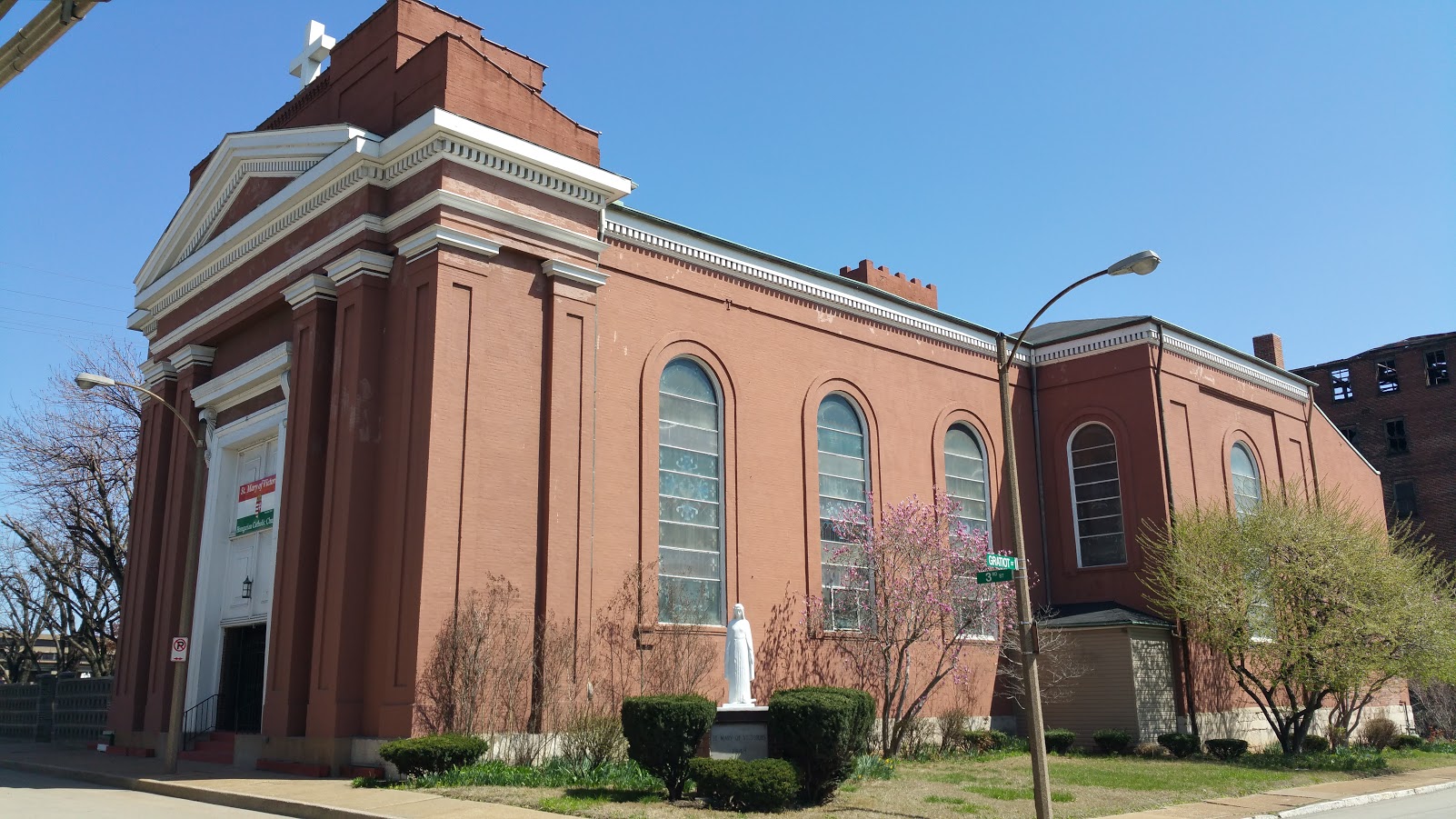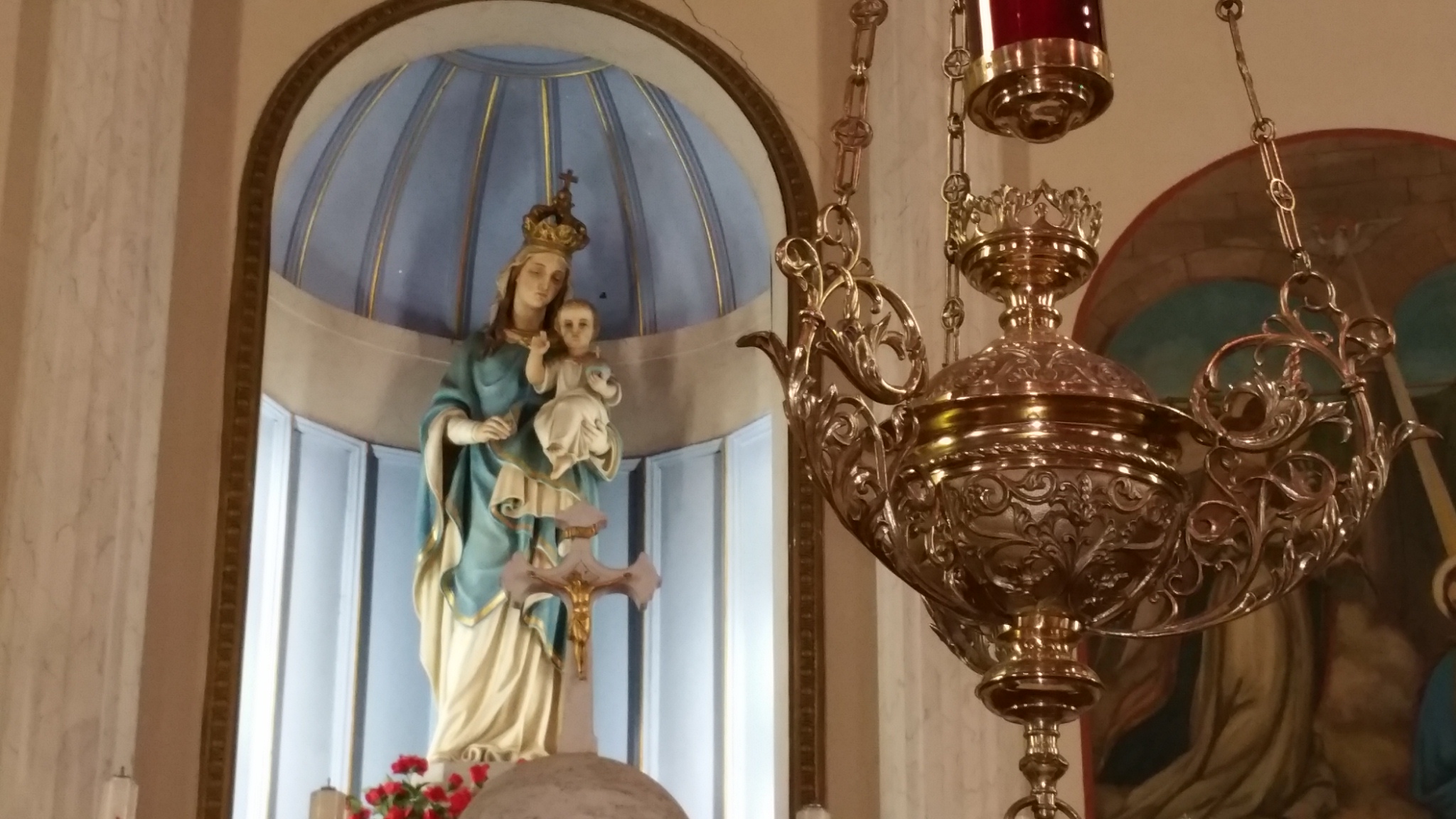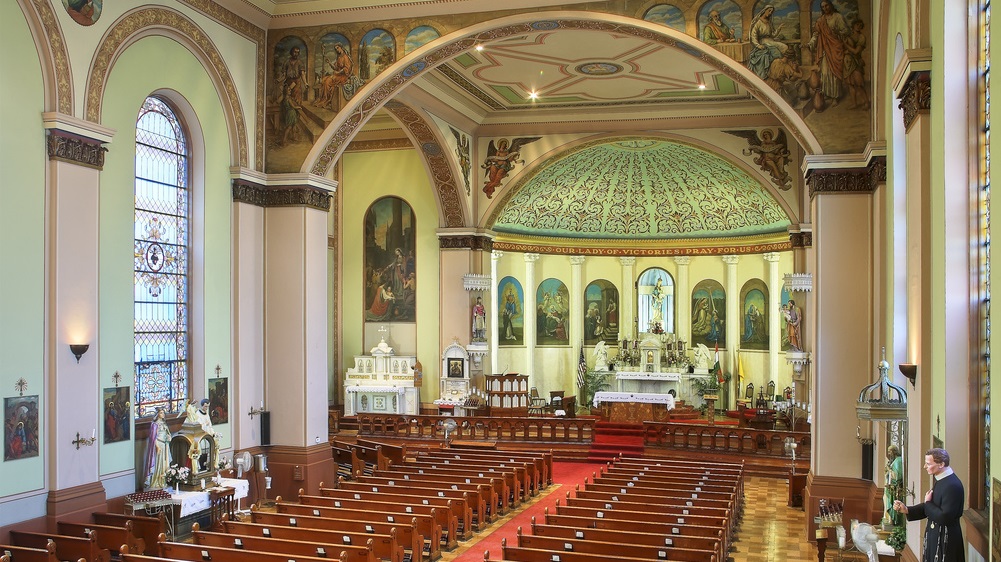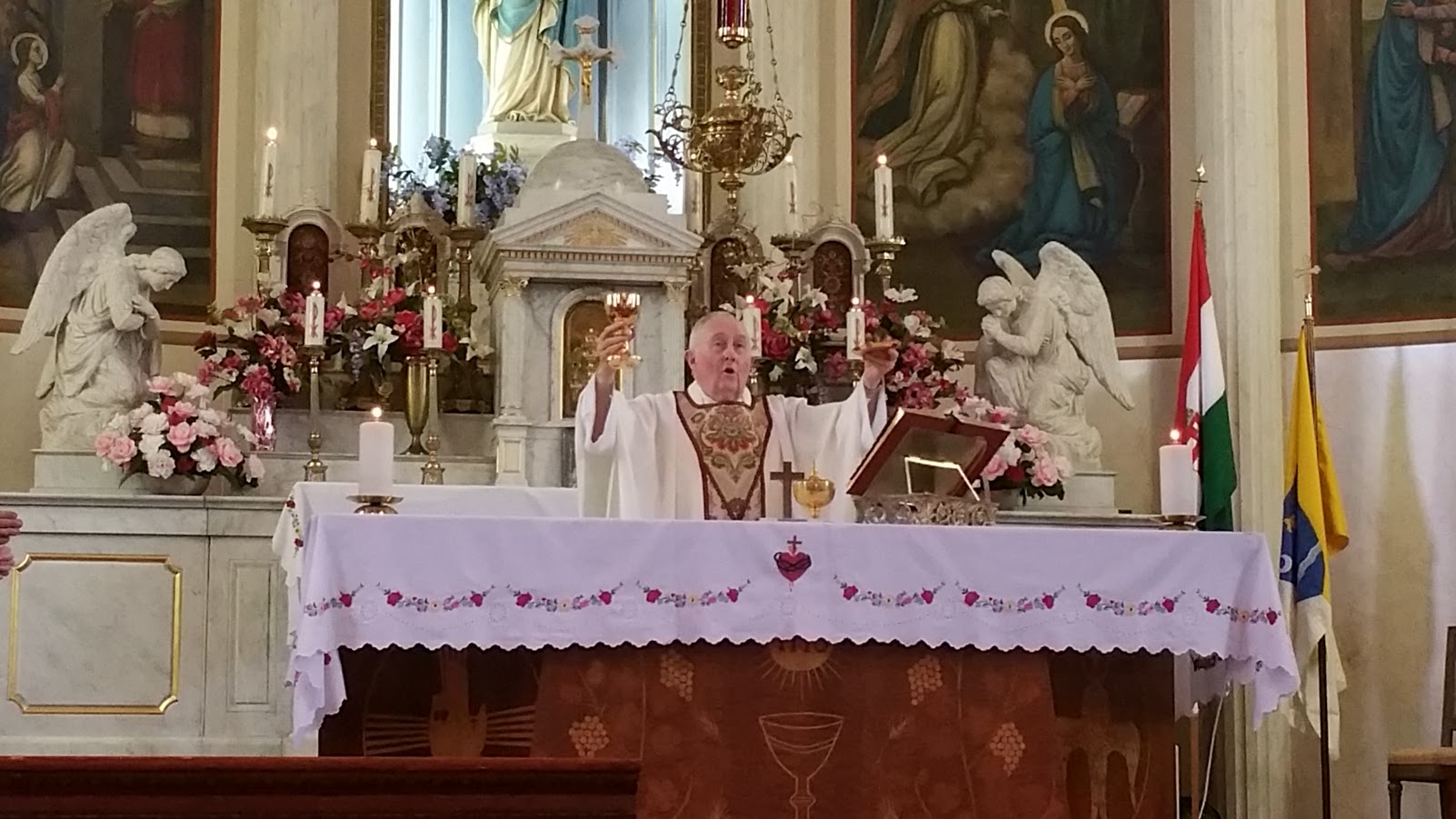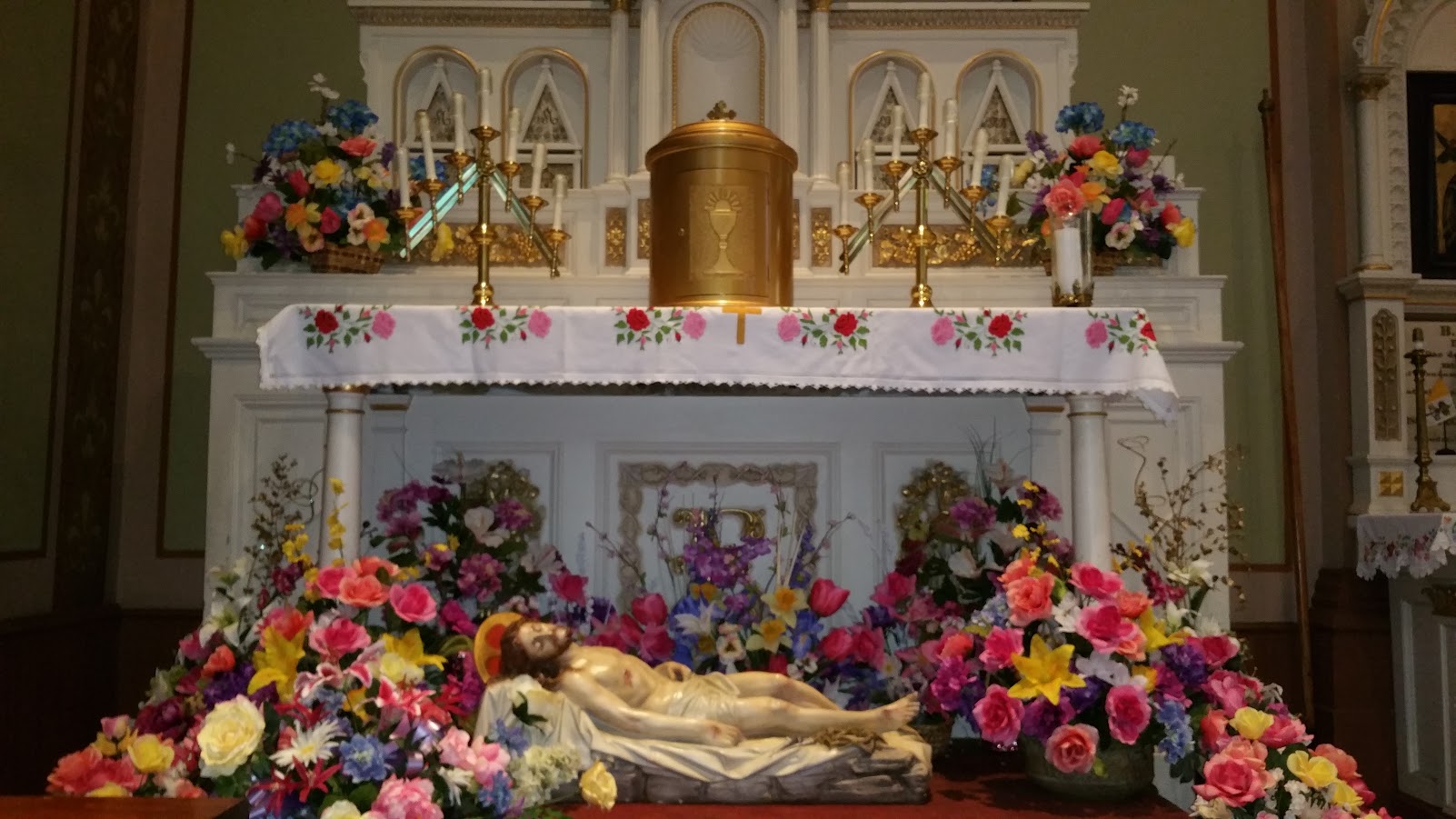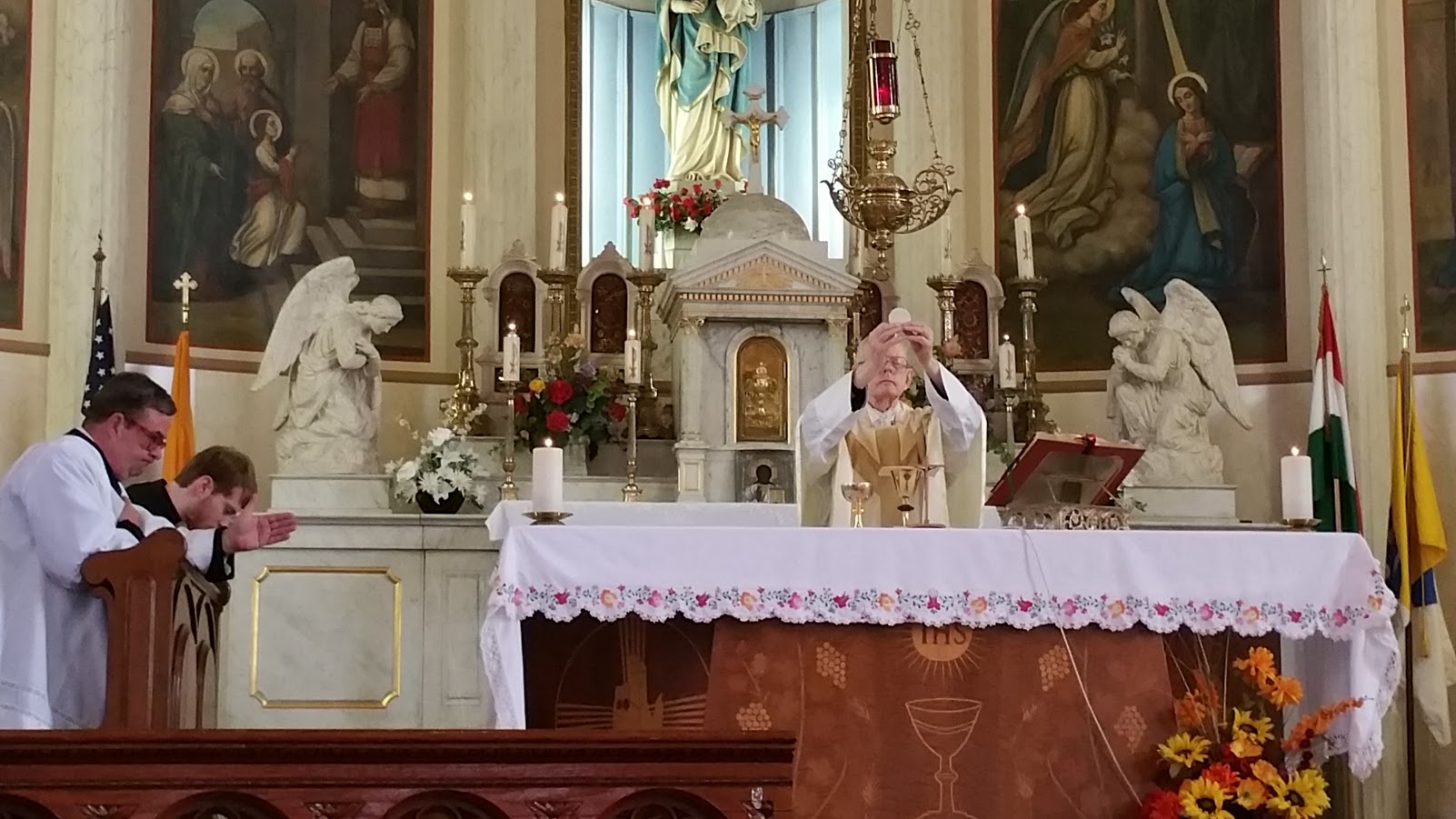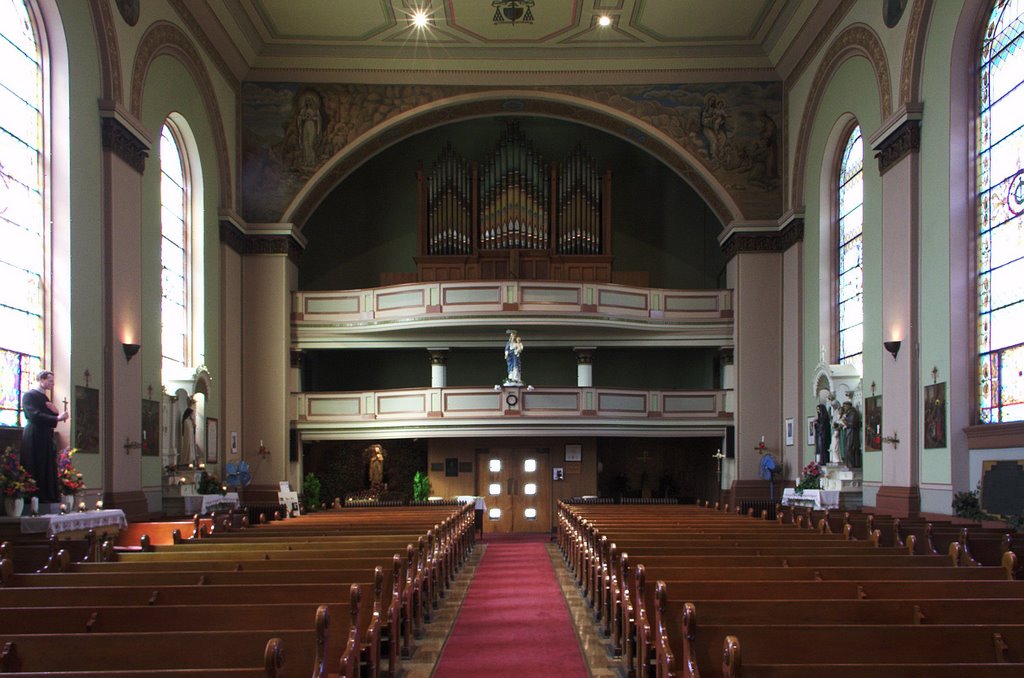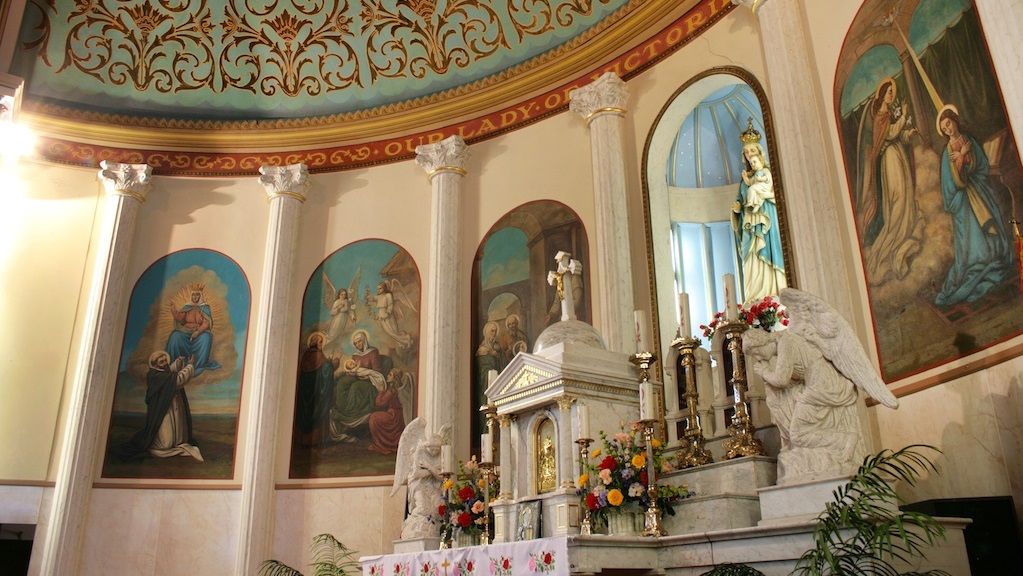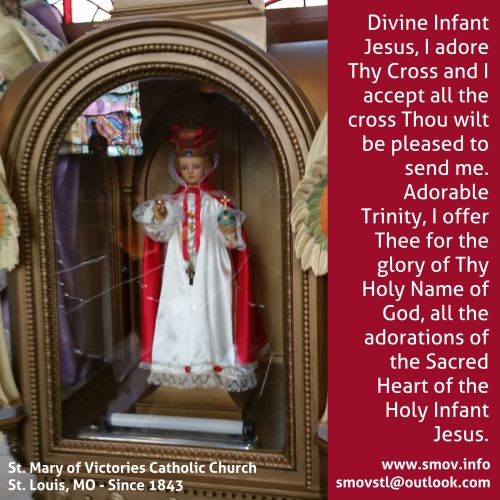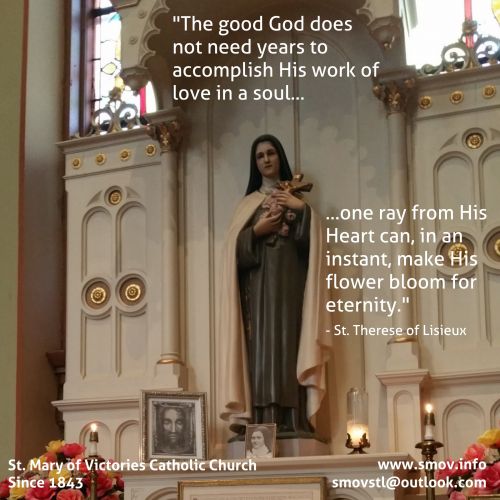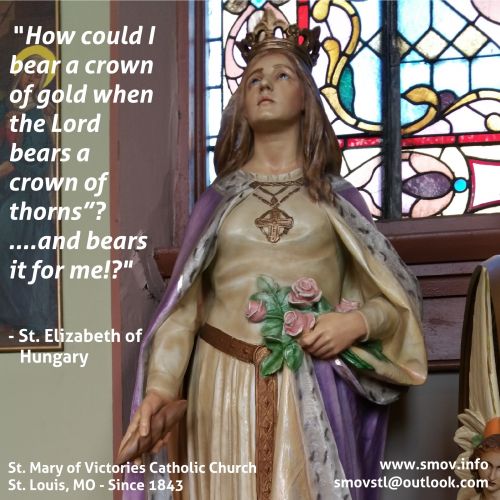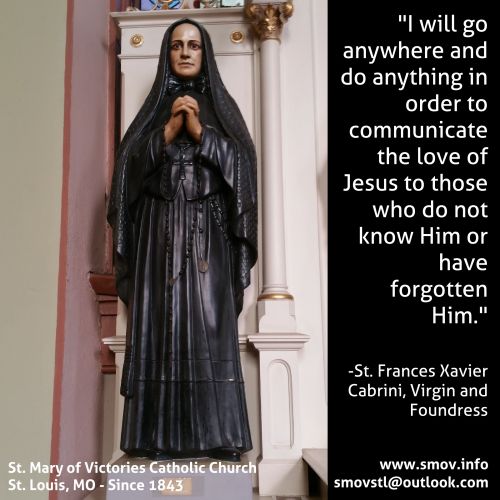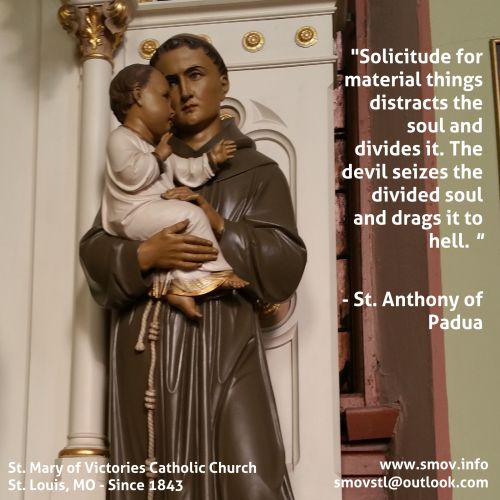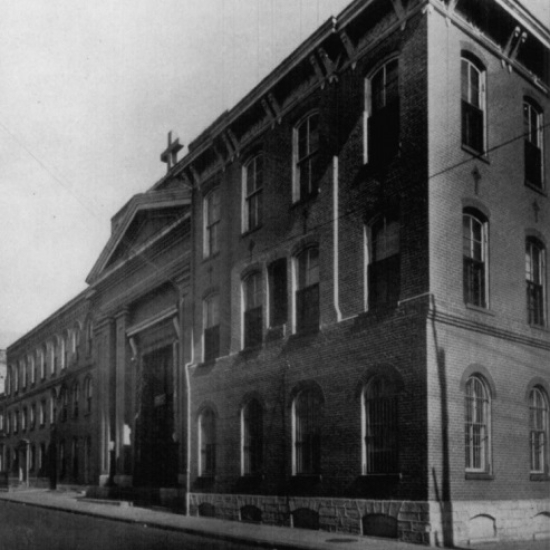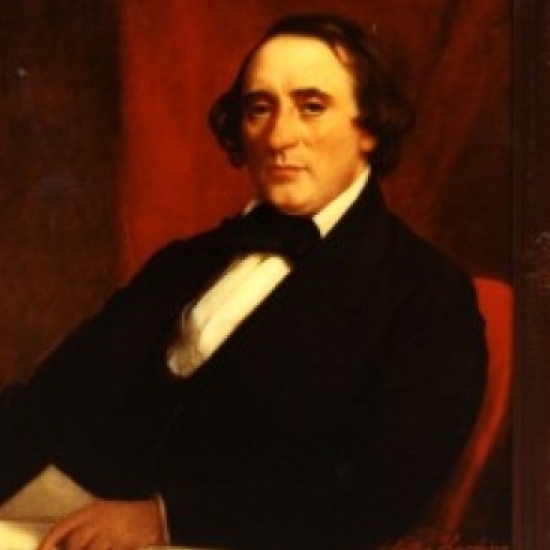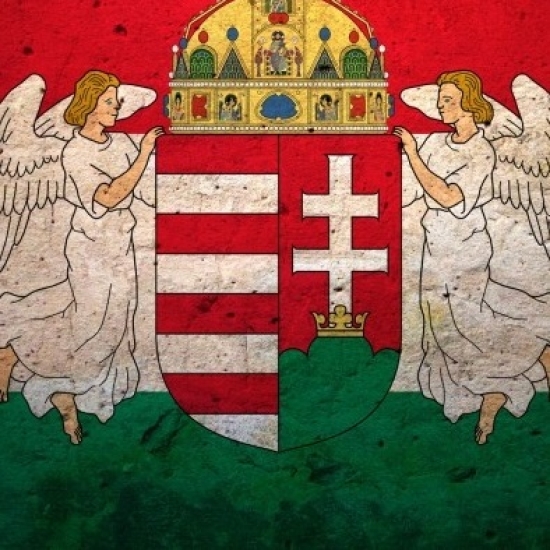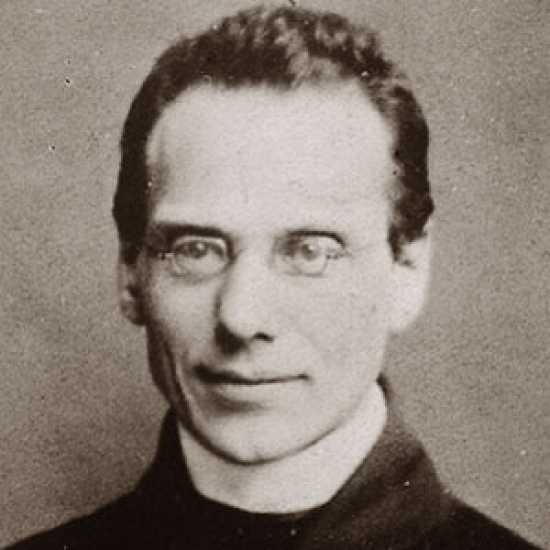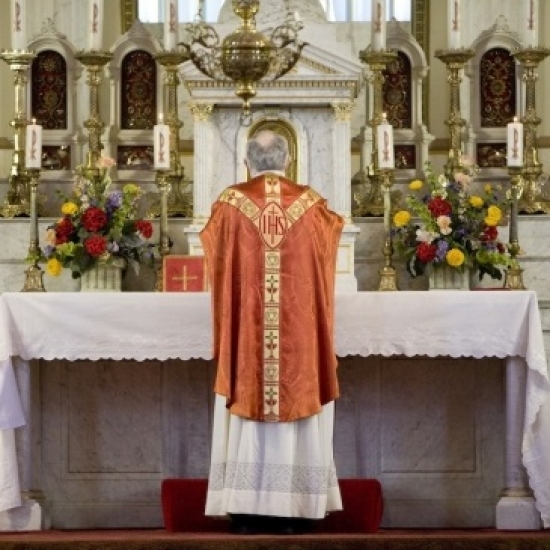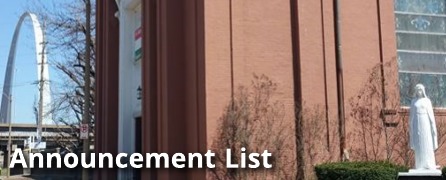6 August 2013, Transfiguration
EF Missa Cantata, 8.00am
Introit: Illuxerunt, begin on F (as mi)
Gradual: Speciosus, begin on E (as sol) Woman sing V.; all join at *scribentis.
Alleluia: Candor est, begin on D♭ (as fa) Men sing V., all join at *illius.
Offertory: Gloria et divitiae, begin on F (as fa)
Communion: Visionem, begin on E (as re)
Recessional: Jesu dulcis memoria, PBC, p. 101. Begin on G (as la). [N.B. This is today’s OF Lauds hymn].
Mass IV, Credo II, Solemn Ite.
The celebration of the Transfiguration of Christ, also celebrated as the feast of the Holy Savior, is perhaps as old as the fourth century. It is found in the early ninth-century Marble Calendar of Naples, and is said to have become widespread in the Latin West in the twelfth. In 1457, in commemoration of the arrival at Rome on this day in the prior year of news of the victory of the Hungarian led by St. John Capistran and George Hunyadi over the Turks at Belgrade, Pope Callistus III mandated the feast for all churches of the Roman observance.
The EF Introit has two phrases:
- Illuxerunt coruscationes tuae orbi terrae
- commota est et contremuit terra.
For the older feasts it was a general rule that when the antiphon was taken from the Psalter, the verse was taken from the same psalm. Later feasts, as that of today, seemingly ignore this rule. The flood of light which enveloped our Lord on Tabor, or rather, which emanating from His divinity had transfigured His human nature, in all likelihood occasioned the choice of the first psalm-verse. The effect of this extraordinary vision caused St. Peter to exclaim: 'Lord, it is good for us to be here... Let us make here three tabernacles.'
The second psalm-verse again calls this happiness to mind. As a matter of fact, God does occasionally impart to us His illuminations and consolations. But they should serve to show the more clearly that our lasting home is not on this earth; they should enkindle in us a yearning and desire for an eternal transfiguration in heaven, the true home of our soul. To be sure, in order to attain this we must walk the same path that Christ has walked: suffer, and so enter into glory.
The shaking and trembling of the earth mentioned in the second verse of the antiphon should induce us to look beyond Tabor to the end of time when Christ will come again in great power and glory. At that moment not only Moses and Elias and the three Apostles, but all mankind just risen from the grave, will see Him in His glory and offer Him homage. The ardent longing of all the just is centered on that great day when 'the body of our lowness will be made like to the body of His glory' (Philipp. 3, 21), on that transfiguration at their entrance into the courts of heaven.
The Introit for the feast of St. Lawrence almost certainly served as a model for this Introit. Compare Illuxerunt and Confessio, corrusca-(tiones) and pulchritudo, (corrusca)-tiones tuae and conspectu eius, contremuit terra and (sanctificati)-one eius. In the original melody the first phrase closes by tarrying quietly on the dominant, while here it is supplemented with the words orbi terrae, whose melody is evidently modeled on that over terra. These two words must be sung somewhat more broadly. The melody over commota est is energetic and forceful.
The Gradual is taken from the Christmas season (Sunday within the Octave). As with the Christ Child in the manger, we think of Jesus as being more than His early appearance would show. So today we contemplate the divine element which transfigures the Son of Man. Never before did a human form radiate such supernatural beauty as did Christ's on Tabor. There are two phrases in the corpus and three in the verse:
- Speciosus forma prae filiis hominum
- diffusa est gratia in labiis tuis
- V. Eructavit cor meum verbum bonum
- dico ego opera mea Regi
- lingua mea calamus scribae velociter scribentis.
Whoever contemplates the most wonder-ful human ever born constantly discovers new attractions. But however swiftly the pen may set down the movements of one's heart, still more beautiful and sublime things remain to be said. None of the soul's faculties can gain an adequate comprehension of Christ's life and still less how it conforms to His essence: Nec laudare sufficis! One thing, however, remains constantly before the singer's mind: 'I speak my works to the King.'
This Gradual is in the third mode. Of the various types employed, the one here is found on the Tuesday after the fourth Sunday of Lent, on the feast of the most Precious Blood (July 1), and on the feast of the Crown of Thorns (celebrated in some places on the Friday after Ash Wednesday). The melody toward the end of the corpus and the verse is extraordinarily florid. Compare:
(diffu)-sa est gratia in Iabiis tuis
(ca)-lamus scribae velociter scribentis
The clivisat the close is to be prolonged. A variety of neumes are employed before the final word-accent; thus we have a torculus and a bistropha praepunctis over (labi)-is, while over (veloci)-ter there is a torculus resupinus. Then the bistropha follows upon a syllable which is even separated from the preceding neum by a pause. As may be seen by comparing other Graduals of this type, the melisma beginning with a g a b♭ g f over tuis and (scri)-bentis must coincide with the word-accent. As a result, we find the following grouping of endings for this Gradual (I) and for that of the feast of the Precious Blood (II):
- (Iabiis) - tu - is
velociter (scri) – ben - tis - .(et) sang – ui - ne
(tres) – un – num - sint
The dactyls are well fitted to the trochees. Corpusand verse have in common a sort of flexa (1) and a sort of middle cadence (2):
1. 2.
I. (for)- ma I. (homi)- num
(cor me)- um (bo)- num
(Re)- gi
II. (ve)- nit II. (Chri)- stus
(cae)- lo (San)- ctus
(San)- guis
In the corpusthe first phrase rises to high e; c dominates the second, surpassed only once by d. Similarly we hear high e several times in the verse, while its third phrase has the same melody as the second of the corpus. The verse foregoes the development which enhances the artistic worth of Graduals of other modes, as well as that of the third. In more than one passage of the corpus, we receive the impression that the piece is composed in the second mode, especially with the words prae filiis homi-(num), Iabiis, gratia. We must assign the final cadence of the last word a place among the wandering melismas, which are found in the Graduals of various modes (of the first mode: in the verse of the first Sunday of Advent over mihi; of the second mode: in the verse for the Midnight Mass of Christmas over scabellum; of the fifth mode: in the verse for the first Sunday after Pentecost over (ma)-la; of the seventh mode: in the corpus of the third Sunday after Pentecost (EF) over te. Diffusa might well find place in a piece of the second mode; but with g e, following upon f g, we are again led from the second mode.
The verse begins with an extremely pleasing motif. Over cor, the passage g a b c b c c b of (eru)-ctavit becomes b c d e d e e d. The announcement of the sublime word with verbum bonum and the signification of this word at mea Regi bear the same melody. But that is only accidental. We are struck by the recitation on a over lingua mea ca-(lamus).
The Alleluia-verse has three phrases:
- Candor est lucis aeternae
- speculum sine macula
- et imago bonitatis illius
The shining countenance and the transfigured appearance of Jesus on Tabor were irradiations of the divinity which dwelt in Him. This divinity, in turn, was naught but the reflected splendor of the eternal light of the Father. The Father sees in the Son the reflection of His own Being, the brightness of His own eternal light, His own overflowing goodness and endless perfections which suffer neither diminution nor decrease. And then, as if in recognition, He exclaims: "This is My beloved Son in whom I am well pleased." These same words are in a certain sense also directed to us, for by them, as the Collect of the day indicates, we are assured of our perfect adoption as sons. Would that we might show ourselves worthy of this distinction and become spotless children of light, true images of divine goodness! The borrowed melody (cf. Corpus Christi) is well adapted and gives it a lucid and joyful signification.
The Offertory has two phrases:
- Gloria et divitiae in domo eius
- et justitia eius manet in saeculum saeculi. Alleluia.
Our divine Lord was very fond of speaking about His Father's house. The treasures and riches of this heavenly mansion and the grandeur of His own glory are celebrated today, especially by St. Peter in the Epistle: 'We were eye-witnesses of His majesty. For He received from God the Father honor and glory; this voice coming down to Him from the excellent glory: This is My beloved Son in whom I am well pleased, hear Him.' (2 Pet. 1: 16-19). With these words the heavenly Father spoke His solemn approbation and canonization of the Son of man and of the works He would perform. In the display of His zeal for justice and for the honor of His Father, Christ will even suffer death and thus merit for His human nature endless riches and glory. And those who tread with Him the path of justice will, as the Collect says, become His co-heirs and the sharers of His glory.
The melody of the first phrase is simple, giving prominence to the word-accents only. The second phrase is more developed and utilizes the florid melismas taken from the Offertory Desiderium over the words coronam.... The latter Offertory is found in the Common for holy Abbots. In older manuscripts it is assigned to the feast of St. Eusebius.
The Communion antiphon has a single phrase:
Visionem quam vidistis, nemini dixeritis, donec a mortuis resurgat Filius hominis.
The event on Mount Tabor was only a type of the beauty which the transfigured Saviour displayed on Easter morning, which henceforth needs to be kept secret no longer. Easter morn has come, and today we make public the experience of our Lord on Tabor. Holy Comunion, which gives us a foretaste of the happiness of Tabor, is the seed of our own transfiguration and the pledge of our glorious resurrection at the end of time. The melody is practically syllabic throughout and duplicates the Magnificat antiphon of the first and second Vespers for the second Sunday of Lent. (In the OF, it is also the Communion Antiphon for that Sunday.) The only difference lies in the pesover (ho)-mi-(nis); the antiphon—somewhat repititously—signs all three syllables of the word on the tonic d.
